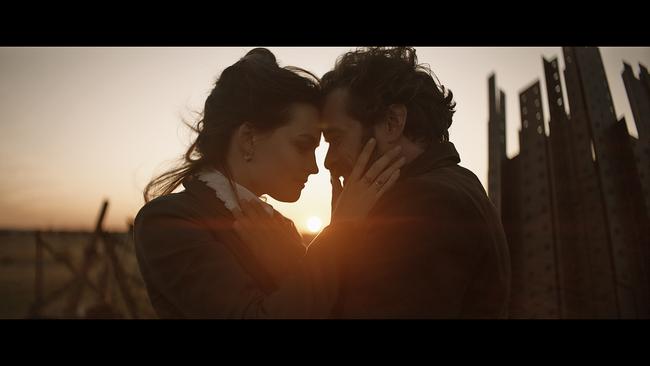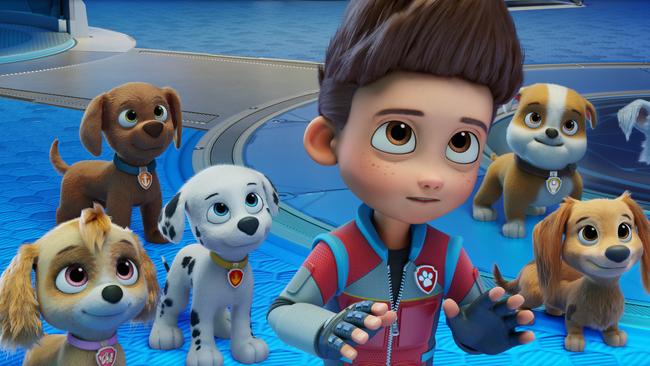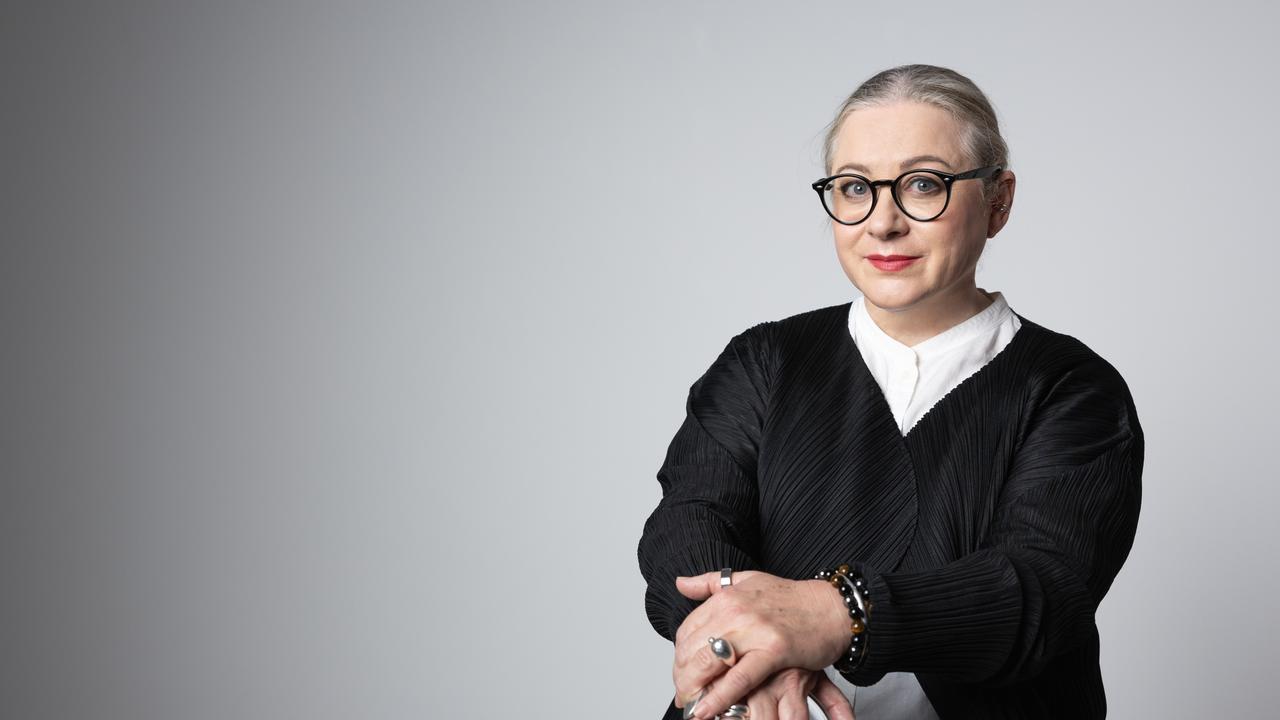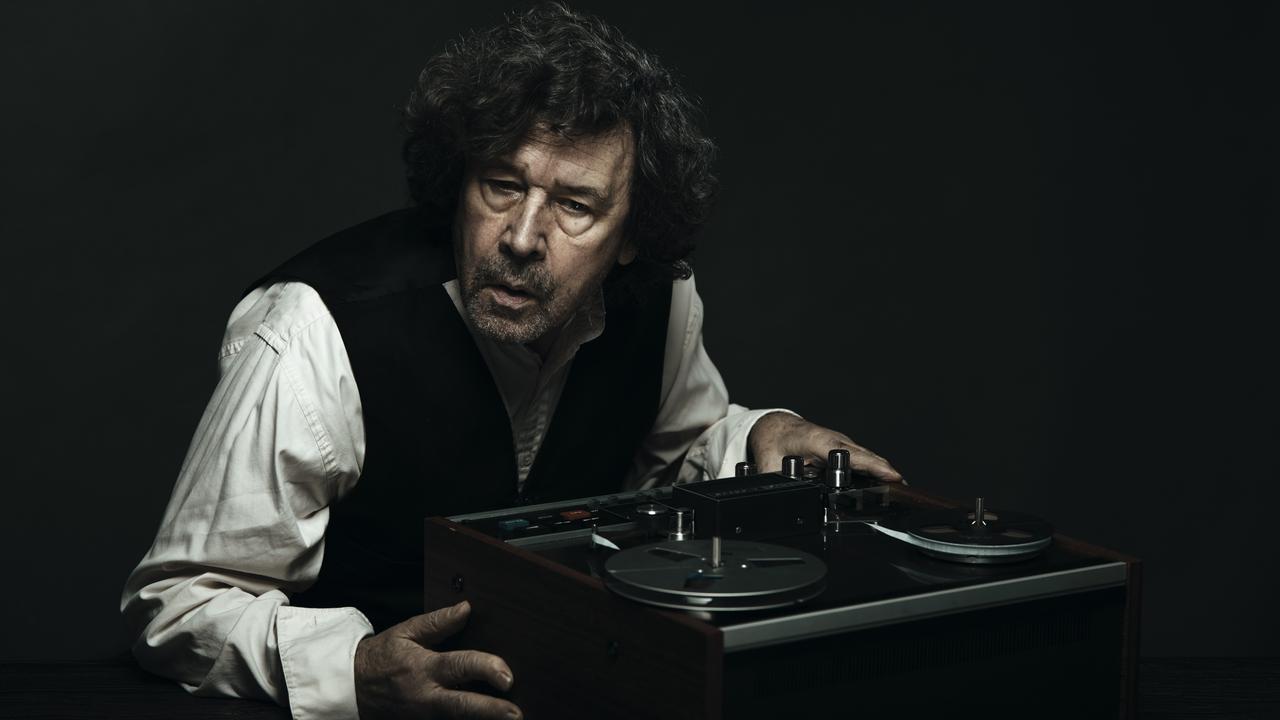
Eiffel (M)
In cinemas
★★★★
Early in Eiffel, a fascinating French language film about the construction of the Eiffel Tower, the structural engineer Gustave Eiffel (Romain Duris) is at a formal dinner hosted by the French minister for commerce.
Before the guests are seated, Eiffel meets a beautiful woman, Adrienne Bourges (Emma Mackey from the TV series Sex Education). Something flashes between them.
It’s 1886 and Eiffel, semi-famous for his recent work on the Statue of Liberty, passionately believes his next job should be on the Paris metro, something ordinary people use every day.
When the question is put to the dinner table, the minister declares that no one dreams about train lines and therefore another monument is the go. Adrienne agrees.
“We must be audacious,’’ she says with a lingering look at Eiffel. He has a lingering look back and announces he will erect a “300m tower, made of metal”. Sigmund Freud might have something to say about his change of heart.
This 98-minute movie, directed by Martin Bourboulon and written by Caroline Bongrand, is billed as being “freely inspired” by historical events. In other words, some of it is made up. Adrienne is almost certainly fictional, and if so her invention is a plus. The tortured relationship between this “charming spoiled child”, as Eiffel calls her in a fit of pique, and the man of nuts and bolts adds a plot-driving passion to a movie full of them.
Watching them at that dinner, one suspects they have a shared, complicated, unfinished history, and so it is. They first meet in Bordeaux in 1860, where Eiffel is building a bridge, and the story shifts between this time and the tower time a quarter of a century later.
The set design, costumes and music meet in an engaging blend of the serious and whimsical. There’s a charming, funny, for now innocent scene in Bordeaux where Adrienne, Eiffel and others at a garden party play musical chairs.
The other passions are real: the older Eiffel’s determination to build the tower despite widespread opposition, and his promise to protect his workmen. “I want no deaths on this site.”
He went close. To make a local comparison, there were 16 deaths in the construction of the Sydney Harbour Bridge three decades later.
We all know the Eiffel Tower was built, so the drama and tension comes from showing us how difficult it was to do, physically, mentally, politically, socially and financially.
There’s a suspenseful single scene where a workman, his belt held on to by a mate, hovers in mid-air as he tries to put one bolt – a crucial bolt – into the tower.
It goes for at least five minutes and encapsulates the challenge of assembling what would be the world’s tallest building from 1889 until 1930, when the Chrysler Building rose in Manhattan. The shots of the early stages of the build, including the underground work, are powerful. At street level, plus ca change, as the French put it.
Local residents protest that the project will blight their neighbourhood; bureaucrats ask if it will scare off tourists and/or fall into the Seine; artists call it an ugly, useless “street lamp of shame”; newspapers run cartoons depicting Eiffel as a horned devil, workers threaten to strike, bankers withhold funds; the Pope complains it will overshadow Notre Dame (I have a feeling that’s one of the made-up bits, but it made me laugh).
Amid all of this, there is Adrienne and Eiffel, another passion that has multiple opponents, including at times the lovers themselves. Eiffel’s wife Marguerite Gaudelet is not shown. She was a decade dead when the tower construction started in 1887. The background of their eldest child, Claire (an excellent Armande Boulanger), becomes an important question mark in this “freely inspired” historical reconstruction.
“I am a man with an idea greater than himself,’’ Eiffel tells the various interested parties when he makes his formal bid to build the tower. I think the director of this film took that line to heart, and I am glad he did.
-
Paw Patrol (G)
In cinemas
★★★
Out of lockdown and looking for a feel-good movie? If so, you will not be let down by the animated adventure PAW Patrol, a sort of Canadian kennel mate to the Australian smash hit Bluey. If you are in the target audience – the under-10s – you will enjoy it for what it is: a fast, funny, colourful romp in which heroic dogs fly choppers and ride motorbikes. If you are a bit older than that, there are a few decent jokes snuck in for you.
Like Bluey, PAW Patrol stars anthropomorphic canines and started life as a television series. Its first litter was in 2013 and it’s still going strong. It’s centred on a 10-year-old boy, Ryder, and the group of off-leash hi-tech hounds he leads in crime-fighting and search-and-rescue missions. This movie-length (85 minutes) spin-off is directed and co-written by Canadian animator and filmmaker Cal Brunker (Escape from Planet Earth, The Nut Job 2). Some of the TV cast members continue in the voice roles, but there are also changes and newcomers, including Kim Kardashian and talk show host Jimmy Kimmel. The K-sters offer some of the adult jokes. Kimmel is TV reporter Marty Muckraker and Kardashian is a pretentious poodle. When she’s told she “talks a lot of trash for a dog that looks like a toilet brush”, it’s hard not to laugh.

However, the ongoing joke for voting-age viewers is Mayor Humdinger (Ron Pardo, continuing in the role), who has just been elected to run Adventure City via a one-candidate ballot sheet. The allusions to Donald Trump are obvious but humorous.
Mayor Humdinger thinks libraries and museums are boring. He ignores scientific advice and launches a cloud-sucking machine to eliminate rainfall. The resulting sunshine is good for the cats he keeps on pedestals. He hates dogs and puts them in jail, which is where we meet the poodle. “I am an unqualified elected official,” he says. “What’s the worst that can happen?”
A lot, of course, and this is when you call the PAW Patrol. Ryder and the dogs, who live in quiet Adventure Bay, jet into nearby Adventure City to save the day. The brave german shepherd Chase “is on the case” but filled with doubt. He has a backstory when it comes to this metropolis.
When they arrive at their towering new headquarters, one of the dogs wonders who pays for such office space. Ryder’s response is a neat inside joke in a movie and TV franchise owned by a Canadian toy and entertainment company.
In the interests of fairness, it should be noted the TV series was created by an Englishman, Keith Chapman, who also created Bob the Builder. Bob and the dogs share a common belief that might come in useful at any age: Can we fix it? Yes we can!



